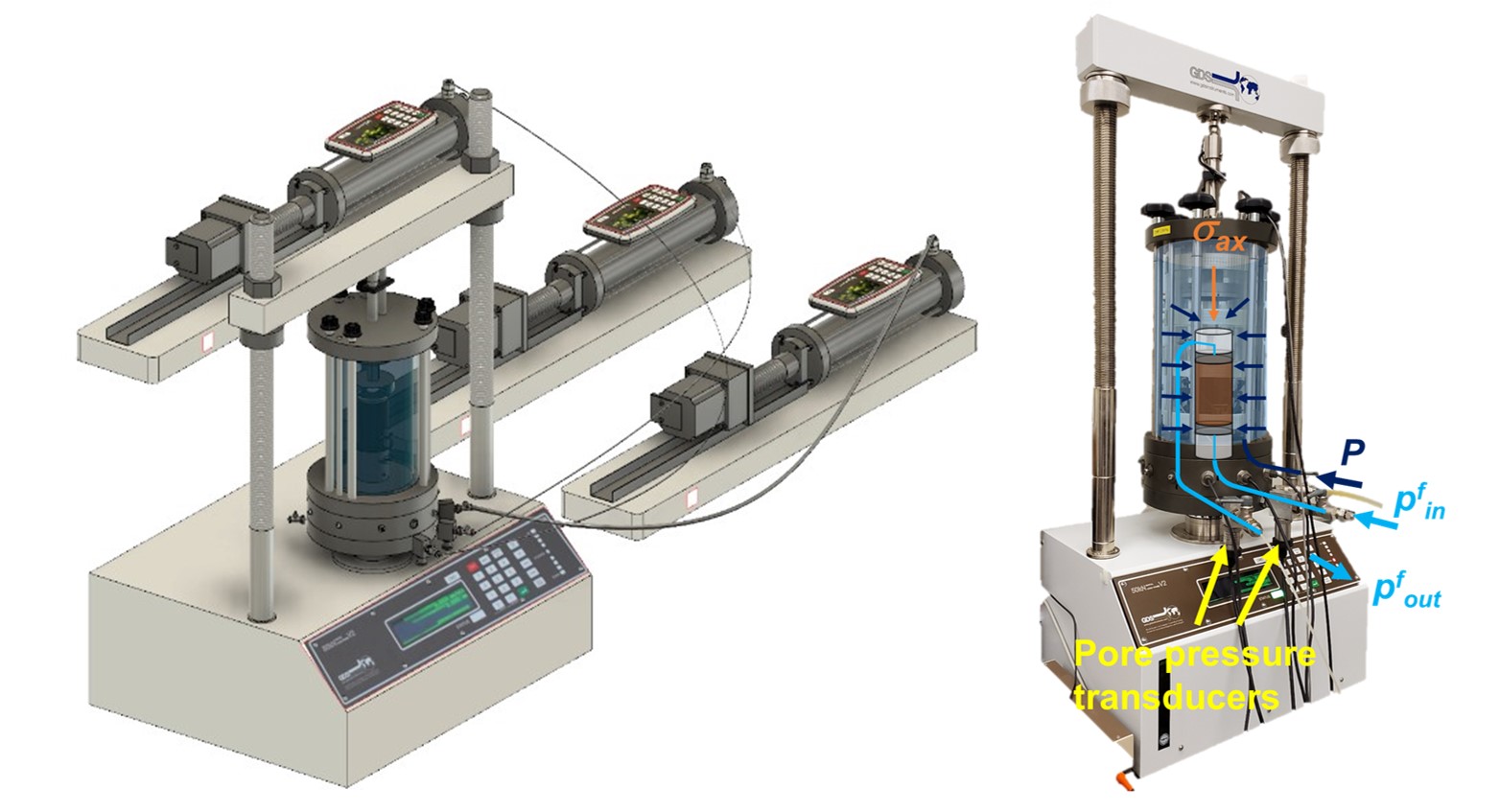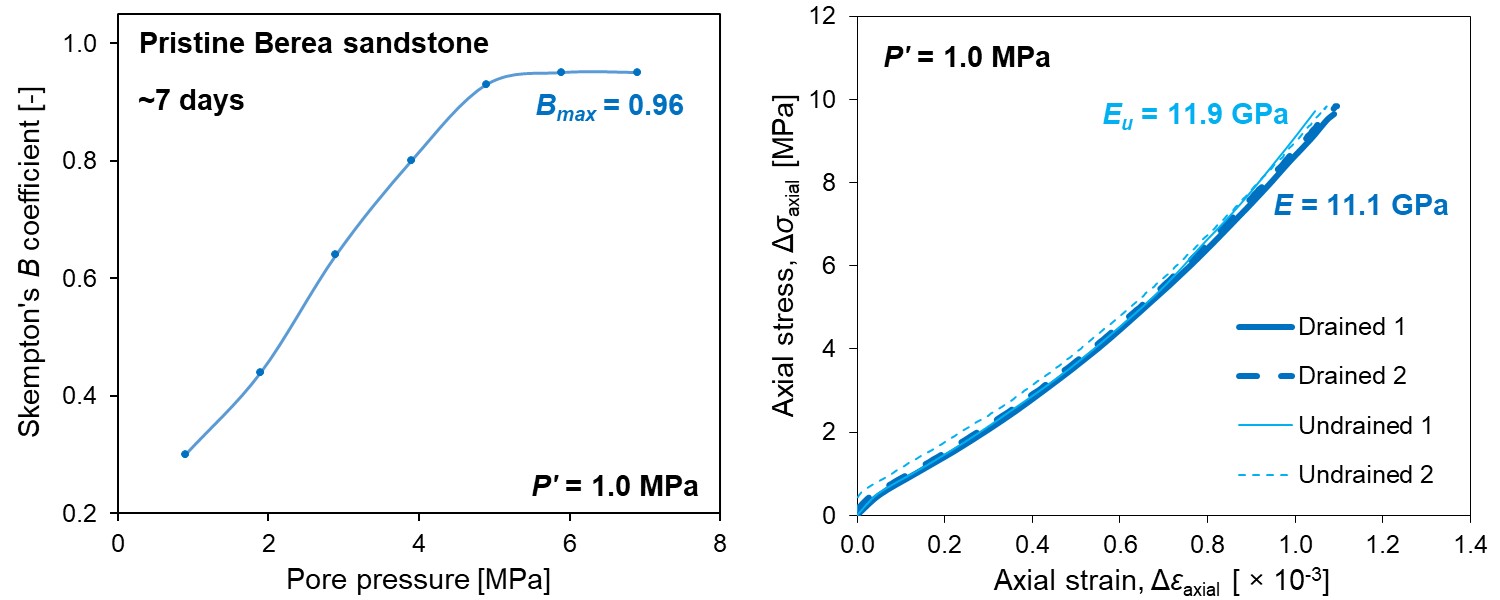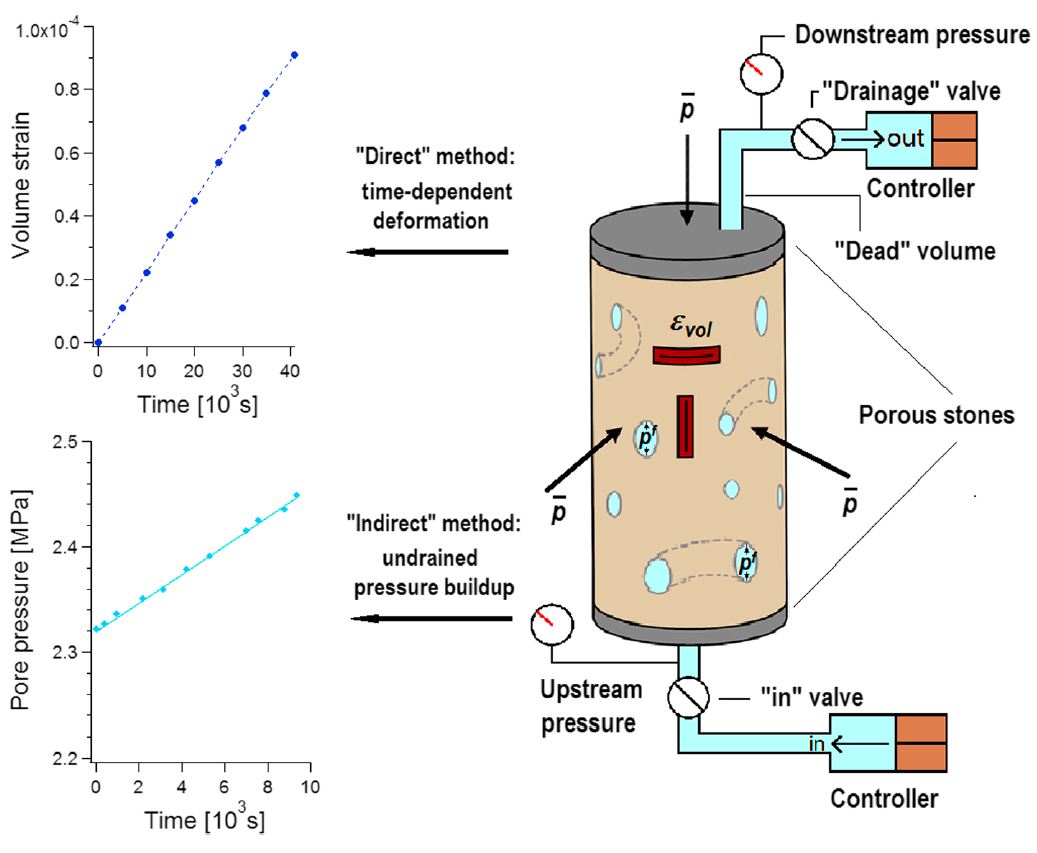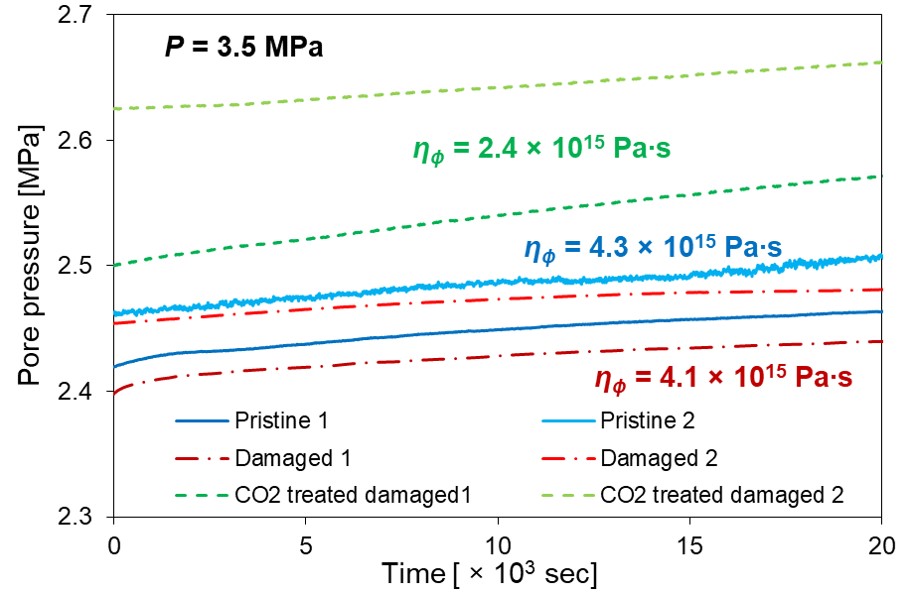Axisymmetric compression tests can conduct measurements of the poroelastic properties of rock in a triaxial cell with a capacity of 3.5 MPa (GDS instruments, UK). The axial load is applied with the 50 kN load frame while confining pressure and input/output pore pressures are controlled by the pressure/volume control pumps with 4.0 MPa capacity. Two pressure transducers are installed at the input and output to monitor the inner pore pressure during the undrained response. The axial/lateral strains are measured from the corresponding LVDTs.

Applications:
- Full saturation is achieved by adopting the back-pressure saturation method, while during the procedure, Skempton’s B coefficient is measured. The B coefficient values increase along with the pore pressure at constant effective mean stress, and as the B values converge, we assume that we have reached full saturation.
- After reaching saturation, the compression test is conducted in drained and undrained conditions. Deviatoric loading can be controlled such that the loading and deformation are in the elastic range and does not damage the specimen. Besides, for drained loading, it is essential to control the loading rate to be slow enough that the deviatoric loading does not induce pore pressure buildup during loading. Loading-unloading tests for drained and undrained conditions are conducted, which allow the evaluation of drained (E) and undrained (Eu) Young’s moduli.

- As the solid matrix of rock exhibits viscous creep, the time-dependent behavior can be observed by the deformation of the specimen in drained condition, or the pore pressure buildup under undrained conditions.


